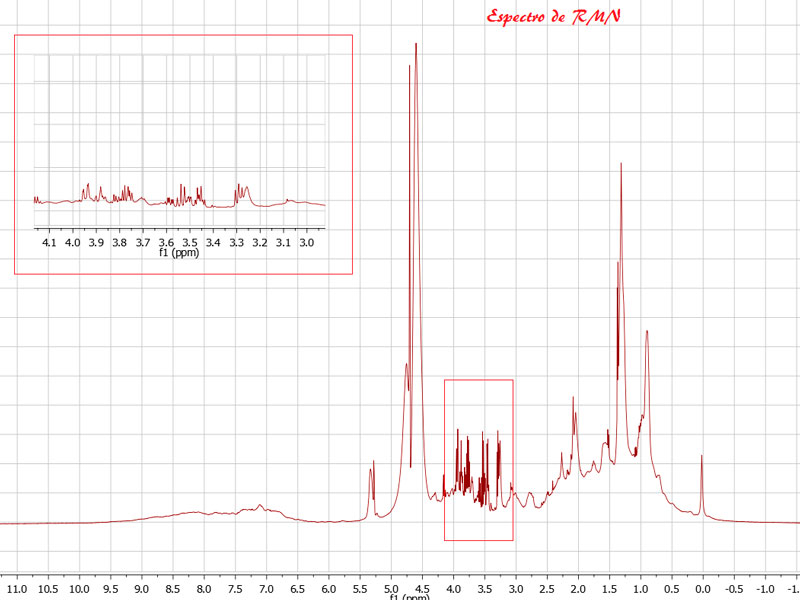
Type: Equipment
Nuclear Magnetic Resonance (NMR) spectroscopy is defined as the study of molecules by recording the interaction of radiofrequency electromagnetic radiation with the nuclei of molecules located in an external magnetic field. It is a technique used to evaluate the biochemical content of living tissues, providing metabolic information complementary to the anatomical alterations that can be found in radiological studies.
At present, the backbone of the laboratory is a 14.1 Tesla (600 MHz) Nuclear Magnetic Resonance (NMR) spectrometer equipped with 4 measurement probes. These probes allow NMR spectra to be obtained on a wide variety of samples including biofluids (serum, plasma, urine, cerebrospinal fluid, tears, cell culture medium, etc.), tissues (tumour biopsies, resections, liver punctures among others), cell lines (umbilical cords, hepatocytes).
It offers the possibility of qualitative and quantitative analysis of metabolites of interest in the sample to be analysed. Moreover, it is a non-destructive, fast and very sensitive technique.
-
This equipment is a fundamental element for the development of the Metabolomics area with special emphasis on its biomedical applications. Some of the probes available allow working with very small sample quantities (4-5 micrograms of tissue and up to 10 microlitres of liquid). On the other hand, the equipment has a microimaging probe with 3 different coils that allow obtaining Magnetic Resonance Images in small samples with high resolution and with the possibility of obtaining valuable molecular information.
- HR-MAS probe; allows obtaining the metabolic profile of tissues (biopsies, resections, punctures) and semi-solids (cell cultures). The probe allows working with sample quantities between 5 and 25 µg.
- 5 mm probe; conventional probe used to obtain metabolic spectra in liquid samples including all types of biofluids. The amount of sample used is usually 500 µL, although depending on the initial concentration, dilutions can be obtained for lower volumes.
- 1 mm probe; very suitable for small sample volumes, we can work with quantities of 10-20 µL. For the measurement, the sample is prepared in capillaries of 1 mm in diameter. The resolution and quality of the spectrum obtained is comparable to the conventional probe. Ideal for the study of animal models where sample availability is very limited.
- Microimaging probe; equipped with 3 different coils, it allows us to obtain high quality magnetic resonance images for samples of up to 1cm2 (biopsies, resections, cardiac tissue, biomaterials).
ISO 9001:2015
- In order to be accepted by the metabolomics service, samples must meet certain prerequisites:
- The user must provide detailed information on the origin of the sample (human or animal), type (tissue, biofluids, cell culture), quantity (total number of samples and approximate volume), hazardousness and recommended handling precautions.
- Samples must be labelled unequivocally for perfect identification.
- The user must indicate whether he/she wishes to recover the sample once the measurements have been completed or whether he/she authorises the service to destroy the samples.
The metabolomics service will not accept:- Infectious samples or samples that are extremely dangerous to handle.
- Human samples that are not completely anonymous.
- Unidentified or defectively labelled samples.
- To facilitate the storage and subsequent handling of the samples, it is recommended that the user provides the samples to the service in a format appropriate to the type and volume of sample. For biofluids with a minimum volume of 500 µl, we recommend sending samples in 1.5 ml conical vials. It is advisable, whenever possible, to contact the service before starting to accumulate samples, to determine the best way to deliver the sample.
- Ezzeddin Ayoub, Mustafa
- PIT-Tecnic/a Sup Uv










